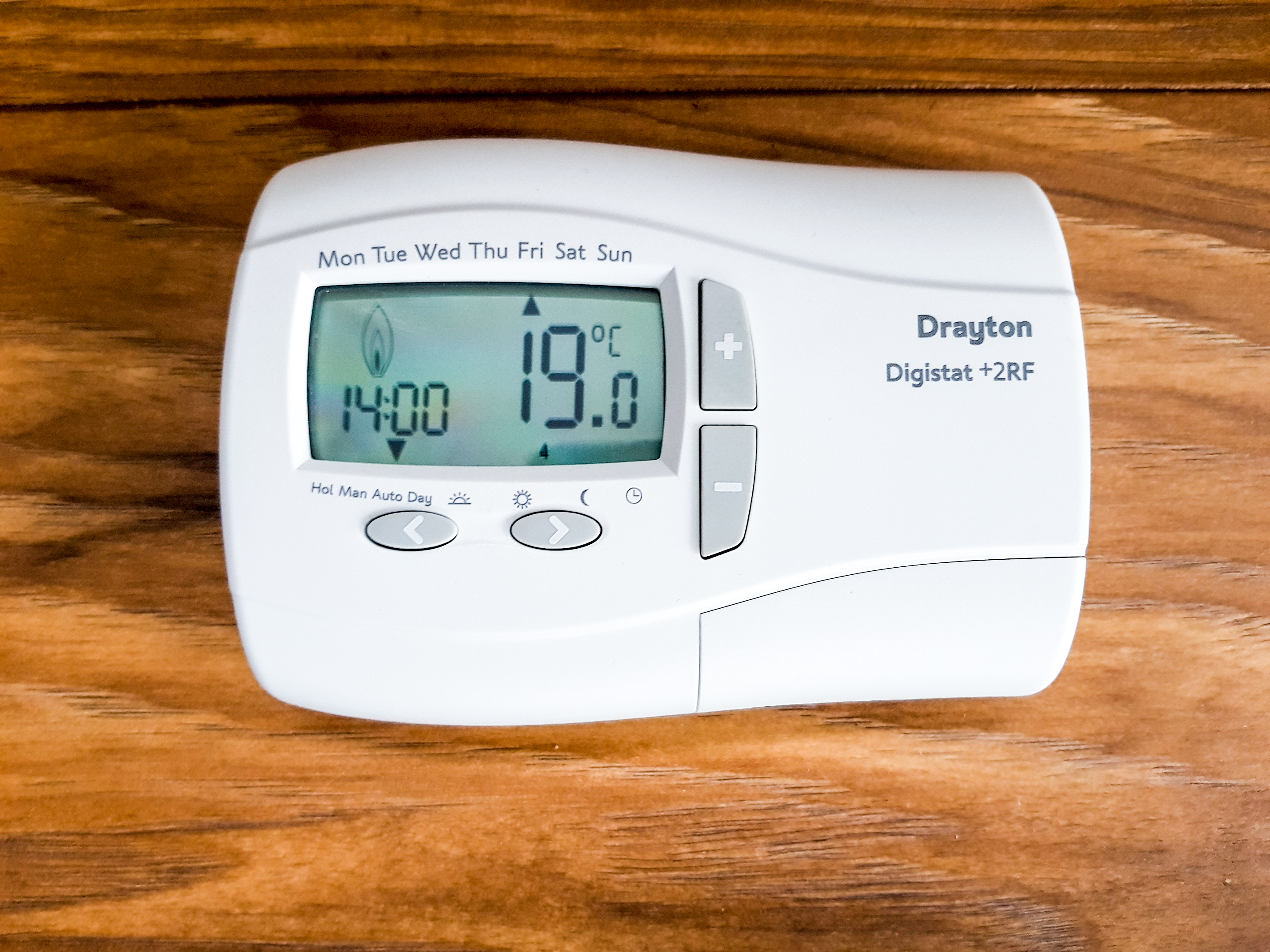Energy saving
We all know the simplest way to save energy: turn down the thermostat and put on a jumper. But how far down to turn the dial? And what is normal? There’s a lot of misinformation out there, but the true average for indoor temperatures in the UK is around 19°C. The World Health Organization recommends that anything from 18°C is a healthy daytime temperature.

A widespread myth is that keeping the heating on low all the time is cheaper than turning it off and on. It is not true. Yes, wildly see-sawing temperatures are inefficient, but you will pay for the total increase in air temperature your central heating produces. So if it’s warmer at night than it needs to be, for many hours, that will cost you more than it will to warm up cooler air in the morning. And there are health benefits to sleeping in a cooler room. It’s good for the skin. It helps insomniacs and can encourage better-quality sleep. It even burns more calories.
Only heat the rooms you are using. A zoned heating system is ideal, but if you don’t have one you can use thermostatic radiator valves (TRVs), which ensure the radiator only comes on when the temperature in the room falls below a certain level. This can mean having to turn them up and down by hand, but Smart TRVs are now available. They work with your phone or virtual assistant – Amazon’s Alexa or Google Assistant, for instance. TRVs can make a significant difference to the total bill. Why heat a spare room? Why heat the whole house if you’re all in the kitchen together watching TV in the evening? Or if you’re working in the daytime in a small back-bedroom?
A smaller room is a good choice, if you’re a home-worker: the smaller the room the less it costs to heat. Consider using a portable radiator for the daytime, and keeping the central heating off or low. Electricity may be more expensive than gas, but you might still save money.
After turning down the thermostat, the other obvious way to use less energy is to insulate. The big things, such as fitting loft insulation (and fitting it well), and filling wall cavities, are costly but will pay for themselves over time. (Estimates for the exact payback time will vary widely, depending on your home’s size, construction and energy use.) A relatively inexpensive insulation hack, however, is to block drafts from doors and windows – and don’t forget keyholes and letterboxes.
If insulation can’t be fixed permanently, consider ‘winterising’ your home at a certain point each year. Seal cracks inside or out with caulking, weather-strips or expandable foam. To see where the drafts go, light an incense stick and watch the smoke. If there’s a particularly poorly fitting window that faces the prevailing wind, could you put some a temporary storm-cover over it from the outside, to keep out the worst of the weather? Don’t forget that curtains are insulation, too – think of how medieval castles used tapestries. Hang one (preferably thick) over the front and back doors as part of your house’s winterisation. Draw the window curtains as soon as it’s dark – and line them if you can, or hang a second curtain behind.
The kitchen sees a lot of wasted energy, but there are simple ways to cut back. If you have a gas cooker, use it to heat water, instead of the kettle. Why? Because the unit price of electricity is far higher than gas. And only boil as much water as you need, obviously. If you’re using the oven, cook as much as you can at the same time. If you’re slow-cooking, do batches for reheating later. Saucepan lids allow you to save gas by turning the hob way down. It’s often said that pasta needs to be boiled hard, with the lid off, to create the right texture but it doesn’t make much difference. (Boiling water is the same temperature however hard it’s boiling – all you’re doing is creating more steam, and movement.) You can even boil pasta for two minutes then pop the lid on and leave it to finish slowly in the cooling water – and that trick works for vegetables too.
To save electricity around the home, you could turn off devices that are have standby settings, such as TVs, consoles and printers. It’s fair to say that many of them don’t consume much power, however, and you won’t want to continually reset the clock on your microwave or oven. Charging devices like phones and toothbrushes should ideally be unplugged once their batteries are full. But don’t worry about lamps: they don’t use any power when they’re off. (It’s unlikely these days that you’re using anything but energy-saving lightbulbs, but if you still are, why?) If you want to save significant amounts of electricity, towel-dry your hair and air-dry your clothes: tumble-drying and hairdryers are among the most power-hungry of household devices.
If you need to stay warm, after all that, take some tips from the past. People stayed well wrapped up indoors and wore multiple layers – an excellent way to battle cold. Victorian underclothes alone could add up to pounds in weight, and weight equates to warmth. People often slept in smaller, insulated spaces, too: either in box beds or four-posters. You might not be ready to invest in those, but you could consider an indoor bed tent, which can be erected over a normal bed. They are apparently popular in South Korea. Whether you’ll save much money, once you’ve paid for one, is doubtful, but they will help keep you warm at night.
Perhaps the best advice, for saving money and saving energy, is to plan. Do you want to tackle the quick and easy jobs first? Or start with the most effective measures? Knowing what you need to do, and in what order, is the first step in getting it done.
